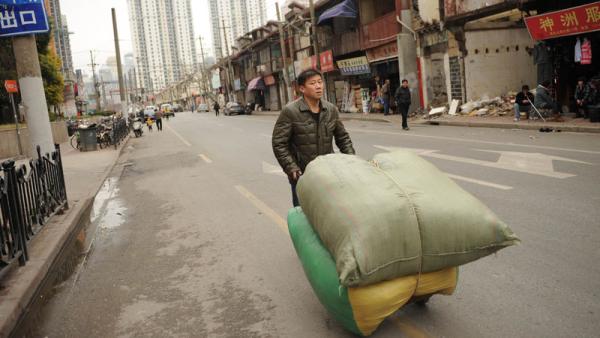Australian manufacturing must refocus on knowledge-based goods and not blame China for industry woes

James Laurenceson, Deputy Director, Australia-China Relations Institute, University of Technology Sydney |

Roy Green, Dean, Business School, University of Technology Sydney |
This article appeared in Sydney Morning Herald, October 22 2014.
With "Made in China" labels everywhere, the villain in the decline of Australian manufacturing appears easy to spot. But a closer look reveals that Chinese imports have been responsible for little of manufacturing's woes. Moreover, China is shaping up as a source of salvation in the future, and not in the way we may imagine.
Earlier this year, research by Professor Jeff Borland showed manufacturing employment in Australia has declined by about 400,000 since the early 1970s. Meanwhile China has emerged as a "factory to the world". Connecting the dots is close to irresistible.
But even a casual reading of the data suggests caution. Half these job losses occurred during the 1970s. This immediately rules out China. The country didn't even begin to reintegrate into the global economy until 1979. It was only during the 1990s that China's share of Australia's goods imports rose to 5 per cent and then to 14 per cent in the 2000s. But here's the kicker. From 1990 to 2008, Australian Bureau of Statistics data show that manufacturing employment didn't decline. Furthermore, the output produced by the sector actually rose by 31 per cent, reflecting productivity growth.
Manufacturing began to shed jobs again only from the middle of 2009. Once again, competition from cheap Chinese imports as an explanation makes little sense. According to a report in The Economist last month, average factory wages in China have increased five-fold over the past decade. In contrast, average earnings in Australia's manufacturing sector have only gone up by 37 per cent. The trend for China to be a higher cost producer will be rapid: The Economist estimates that manufacturing costs will double again, or perhaps even triple, by 2020.
The usual account of China on the export front is distorted too. Any hope that Australia could ever achieve broad success in exporting manufactured goods to China seems to have been shelved a long time ago. One only has to look at the commentary surrounding the proposed Australia-China Free Trade Agreement and its emphasis on the opportunities for agriculture and services to see that.
Yet manufacturing competitiveness these days depends less on costs and more on differentiation through better quality, design and innovation, including business model innovation. Once this is understood, exporting manufactured goods to China is no longer a pipedream.
Nor is it all about superstars such as Cochlear. Australia's myriad globalised, knowledge-based mid- market manufacturers already have an impressive tally of runs on the board. China is now on par with the US as the number one destination for Australia's manufactured exports. But there is a crucial difference: those to China have been growing at double-digit rates, while those to the US have been going backwards.
And consider this: over the past five years, data from the Department of Foreign Affairs and Trade show that the value of Australia's manufactured goods exports to China has grown at a compound annual rate of 13.8 per cent. Meanwhile, the figure for manufactured imports from China is just 6.3 per cent. Yes, you read that right. Manufactured exports to China have been growing at more than double the pace of imports. Of course, exports to China are growing from a lower base but the dollar values are far from trivial, reaching $4.6 billion last year.
That said, Australia's cost position cannot be ignored. A report by the Boston Consulting Group in August found that of the world's top 25 exporting countries, Australia had the highest manufacturing costs.
So we need to do what some other high-cost advanced economies already do so well – focus relentlessly on areas of present and potential competitive advantage, build research and innovation capability around them and encourage smart specialisation by our emerging manufacturing "micromultinationals" in global markets and value chains.
It would be a tragic failure of policy if after years of complaining about cheap Chinese competition, Australia stood still while China moved up the manufacturing value chain. The Chinese government has demonstrated it is aware of the challenges. Industrial upgrading is one of the main priorities of its current five-year plan.
There is some evidence that NSW is having greater success than traditional manufacturing states including Victoria. Manufacturing value added in NSW for 2012-13 was $34.7 billion compared with Victoria's $25.6 billion. Even manufacturing employment is higher in NSW at almost 270,000 compared with 256,000 in Victoria.
With the right policy framework, focused on knowledge intensive manufacturing, this trend is likely to continue.
Authors
Professor James Laurenceson is Deputy Director of the Australia-China Relations Institute at the University of Technology Sydney.
Emeritus Professor Roy Green is Dean of the Business School at the University of Technology Sydney.

